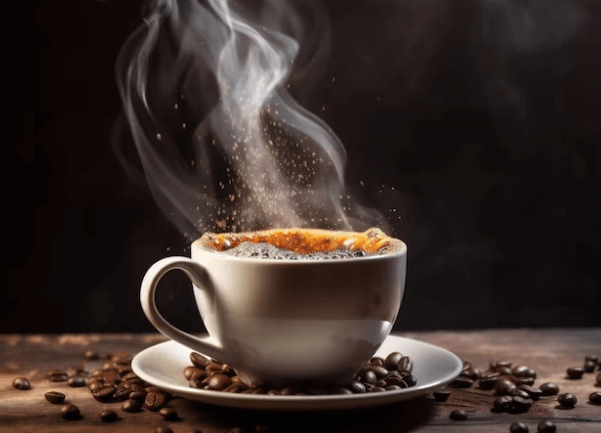
What is the Color Guard: Complete Details
Color guard, also known as “guard” for short, is a performance art that combines elements of dance, movement, and the manipulation of various equipment such as flags, rifles, and sabers. Originally stemming from military traditions, color guard has evolved into a highly sophisticated and visually captivating activity with widespread appeal.
Historical Background
The origins of color guard can be traced back to ancient times when military units used flags to convey commands and identify themselves on the battlefield. Over the centuries, the use of flags in military ceremonies became more elaborate, eventually leading to the formation of dedicated color guard units within armed forces around the world.
Evolution Over Time
In the 20th century, color guard underwent a significant transformation as it transitioned from its military roots to civilian and artistic use. Today, color guard is not only performed by military personnel but also by students, performers, and enthusiasts of all ages and backgrounds.
Roles and Responsibilities
Color guards performers, commonly referred to as “guards,” fulfill several essential roles during performances:
- Flag Bearers: Flag bearers carry and manipulate flags of various shapes and sizes, executing intricate spins, tosses, and formations to enhance the visual impact of the routine.
- Rifle Bearers: Rifle bearers handle rifles during performances, showcasing skillful manipulation through spins, tosses, and catches. Rifles, typically wooden or metal replicas, add dynamic movement and visual interest to the performance.
- Saber Bearers: Saber bearers wield sabers, adding an element of elegance and precision to the performance. Sabers are often used in conjunction with dance movements to convey emotion and narrative themes.
- Dance and Movement: In addition to handling equipment, color guards members incorporate dance and movement into their routines, complementing the music and equipment manipulation with expressive choreography.
Training and Skill Development
Becoming proficient in color guards require dedication and skill development in several areas:
- Physical Fitness: Performers must maintain physical fitness to execute demanding routines with precision and endurance. Strength, flexibility, and cardiovascular fitness are essential for success in the activity.
- Coordination and Teamwork: Effective teamwork and coordination are crucial in color guard’s performances. Performers must synchronize their movements and transitions to create a seamless and polished routine.
- Technique and Precision: Mastering the techniques of equipment manipulation, dance, and movement requires consistent practice and attention to detail. Precision in execution enhances the visual impact of the performance.
Performance Settings
Color guard’s performances take place in various settings, including:
- Parades: Color guard units often participate in parades, leading marching bands or representing organizations with ceremonial displays of flags and equipment.
- Sporting Events: Color guard’s teams perform during halftime shows at sporting events, adding entertainment and energy to the atmosphere.
- Competitions: Competitive color guard’s circuits host events where teams showcase their skills and creativity, vying for top honors in various categories.
- Indoor Performances: Indoor color guard’s competitions, held in gymnasiums or arenas, allow teams to explore creative themes and choreography in a controlled environment.
Uniforms and Equipment
Color guards performers wear uniforms and use equipment that reflect the theme and style of their performance:
- Flags: Flags come in various sizes, shapes, and colors, providing visual accents and focal points during routines.
- Rifles: Rifles are wooden or metal replicas used for spinning, tossing, and catching, adding dynamic movement and visual interest to performances.
- Sabers: Sabers are elegant props used for dramatic effect, enhancing the storytelling aspect of color guard’s routines.
- Costumes: Performers wear costumes that complement the theme of the performance, ranging from traditional military attire to contemporary dancewear.
Importance in Events
Color guards play a significant role in various events by:
- Adding Visual Appeal: The colorful flags, precise movements, and dramatic flair of color guard’s performances enhance the visual experience for audiences.
- Enhancing Music Performances: Color guard’s routines are often synchronized with live music or recorded soundtracks, complementing the auditory elements of the performance.
- Conveying Emotions and Themes: Through expressive movement and symbolic gestures, color guard’s performances convey emotions, narratives, and themes that resonate with audiences.
Conclusion
Color guard is a dynamic and expressive art form that combines dance, movement, and equipment manipulation to create visually stunning performances. From its military origins to its modern-day applications in parades, competitions, and entertainment, color guard continues to captivate audiences and inspire performers worldwide.
FAQs
- Is color guard only for people with prior dance experience?
- No, color guard welcomes individuals with a variety of backgrounds and skill levels. While dance experience can be beneficial, it is not a requirement for participation.
- How much time does color guard’s practice typically require each week?
- Practice schedules can vary depending on the level of commitment and the requirements of the team or organization. On average, performers may practice several hours per week.
- Should you be a certain age to be in color guard?
- Age restrictions can vary depending on the specific color guard program or competition circuit. Many programs welcome participants of all ages, from youth to adults.
- Do I need to purchase my own equipment to participate in color guard?
- In many cases, color guard units provide equipment for performers to use during practices and performances. However, some individuals may choose to invest in their own equipment for personal practice or customization.
- How can I find a color guard’s team or program in my area?
- You can start by researching local schools, community centers, or performing arts organizations that offer color guard programs. Additionally, online forums and social media groups may provide information about nearby opportunities for participation.
Visit our website for more. Click here: “Quick Trend Insights“.





